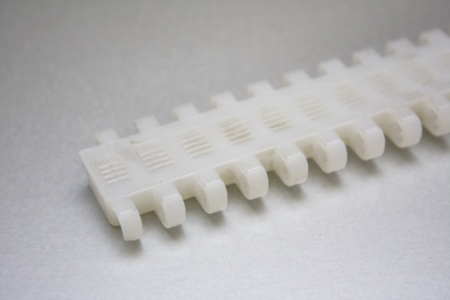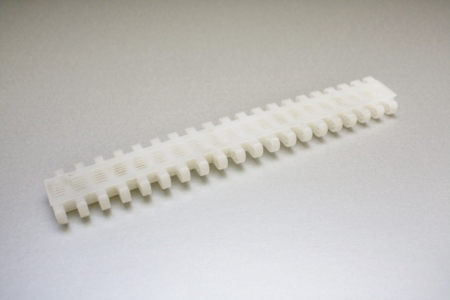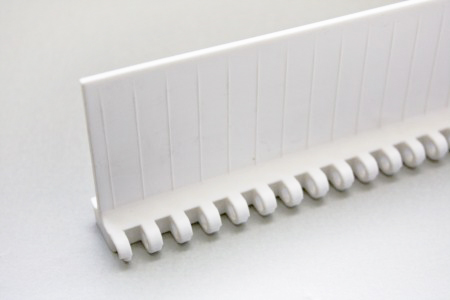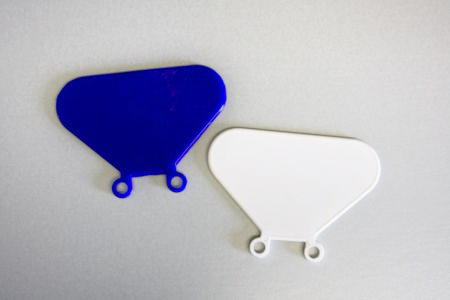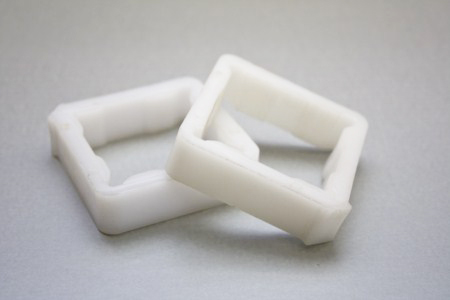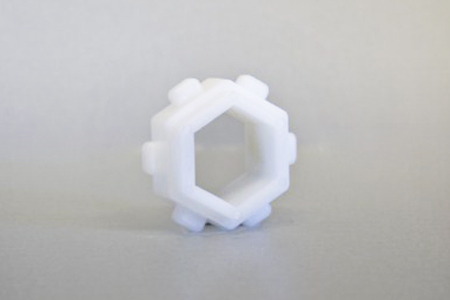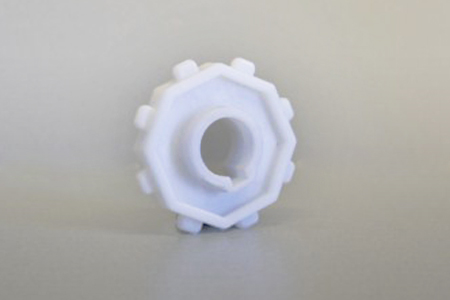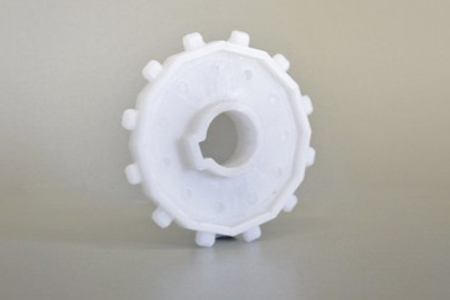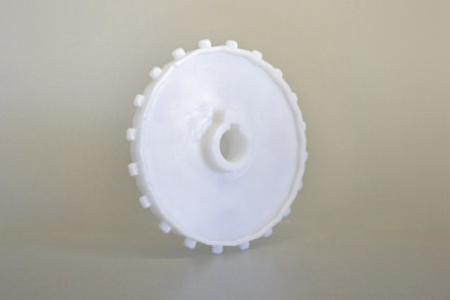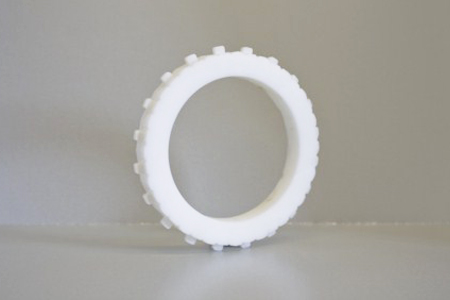P.25-406
Belt Surface: Perforated flat top
Open Area: 13%, 1 x 6 mm
Strength: Medium weight transportation
Materials/Color: PE/Nat, PP/White or Gray and POM/Blue
Width Interval: 10 mm
Accessories: Flights, side guards and friction top flights
Applications: Dairy, vegetables, poultry, snacks, sweet goods and other industries that handle products requiring drainage and very small openings
Related Accessories
Related Sprockets
Standard Belt Material Properties
1) Polyethylene (PE) is the most lightweight and flexible of the plastic modular belt materials. PE belts are characterized by good chemical resistance, water buoyancy and high impact strength. PE will also be ideal for applications that require a flexible belt material with superior impact strength. A broad temperature range of -100ºF (-73ºC) to 150ºF (66ºC) makes this material an ideal choice for seafood and dairy processing applications or any other cold area applications.
2) Polypropylene (PP) is a harder material with an excellent pulling force. PP also has an excellent chemical resistance towards hostile cleaning chemicals and therefore is ideal for applications that require high chemical resistance. PP is the belt of choice for higher temperature applications with a temperature range of 41ºF (5ºC) to 212ºF (100ºC). PP belts are perfect for bakery, meat, and poultry processing applications where high temperature can be a factor.
3) Polyacetal (POM) is the strongest, heaviest and most tolerable of the three standard belting materials. It has a vast pulling force and a hard surface, which leads to reduced friction for the product. It should be used with caution in installations that use cleaning agents that contain acid and/or chlorine. POM is also sensitive to force due to its low impact strength. This belt is well suited to heavier food processing, bottling and canning industry. The acceptable temperature range for a POM belt is from -45ºF (-43ºC) to 203ºF (95ºC).
Note: Belts are manufactured from CFIA/USDA/FSIS approved materials.
